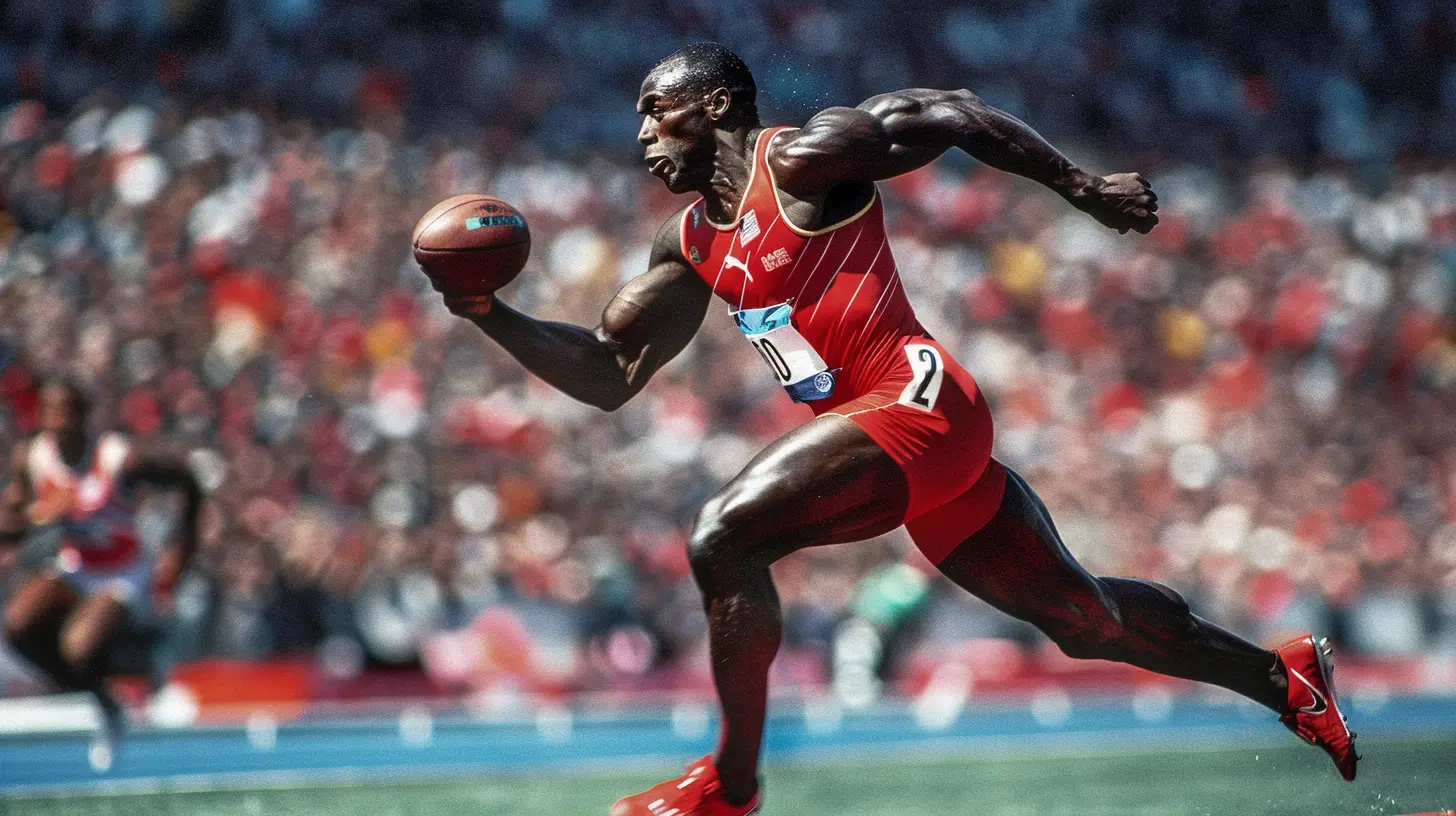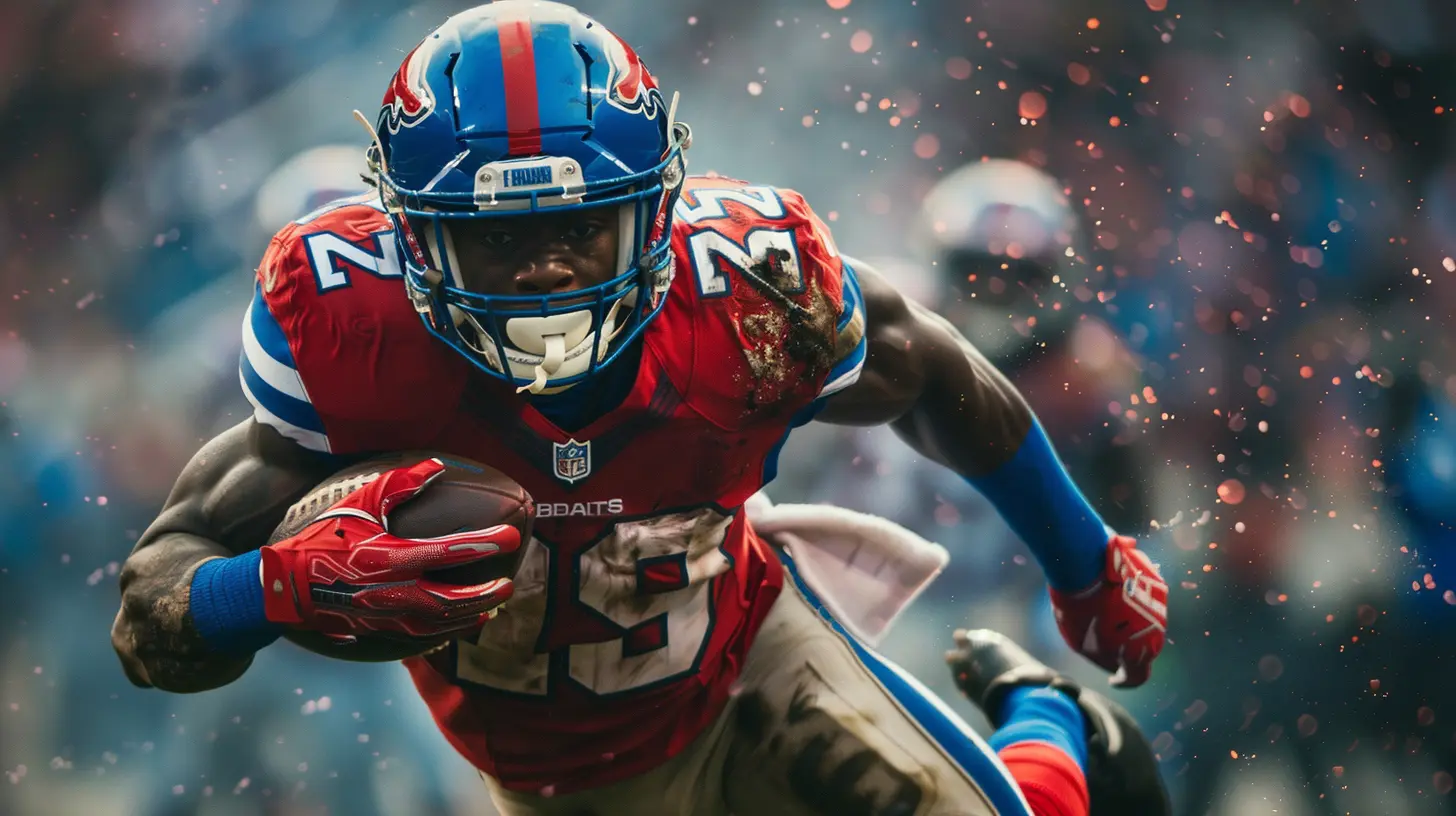18 February 2025
Have you ever witnessed a sports comeback so incredible that it left you speechless? You know what I mean—when an athlete, after a major setback, returns to the arena and dominates like they’ve never been away. There’s something undeniably captivating about a comeback story. It’s not just about winning games or trophies; it’s about resilience, grit, and the human spirit’s refusal to throw in the towel.
Athletes are not immune to hardship, whether it’s injuries, personal struggles, or professional setbacks. But what is it that drives them to push through the pain and rise again? How do they defy the odds and return stronger than ever? Welcome to "The Comeback Code." Let's break it down.

The Psychology Behind a Comeback
It’s easy to think that physical strength is what makes athletes capable of overcoming adversity, but that’s only part of the story. The real magic happens in the mind. Mental toughness is often the secret sauce behind a successful comeback. It's what separates those who stay down from those who rise again.When faced with a setback, an athlete’s mindset shifts into survival mode. They start to see failure as temporary, pain as part of the process, and obstacles as lessons. This isn’t some mystical superpower; it’s all about mental conditioning.
Athletes often work with sports psychologists to cultivate what’s known as a "growth mindset." This means they view challenges as opportunities for growth rather than threats. They’ve trained themselves to focus on what they can control—effort, attitude, and perseverance—rather than dwelling on the uncontrollable.
Grit: The Secret Weapon
One word comes up again and again when talking about comebacks: grit. Grit is that stubborn perseverance in the face of adversity. It’s the “stick-to-it-iveness” that pushes someone to keep going when most would give up. Angela Duckworth, a psychologist and researcher, defines grit as a combination of passion and perseverance toward long-term goals.Here’s the thing: grit isn’t something you’re born with—it’s something you develop. Athletes who have experienced setbacks, like career-threatening injuries or long losing streaks, build grit through those experiences. They learn that success isn’t about never failing; it’s about getting up one more time than you’ve been knocked down.

Famous Comeback Stories
Let’s talk about some of the most jaw-dropping comeback stories in sports. These athletes didn’t just overcome adversity; they rewrote the narrative of their careers.Tiger Woods
Tiger Woods might be the poster child for comebacks in sports. After dominating the golf world for years, his career took a nosedive due to personal scandals, injuries, and multiple back surgeries. Many thought his career was over. But in 2019, Woods won the Masters, cementing one of the greatest comebacks in sports history. What was behind Tiger’s return to glory? It wasn’t just physical recovery—it was his unwavering belief that he could return to the top, no matter how far he had fallen.Michael Jordan
Michael Jordan’s entire career is a testament to resilience. After winning three consecutive NBA championships, Jordan shocked the world by retiring to pursue a career in baseball following the tragic death of his father. His foray into baseball wasn’t exactly successful, but in 1995, Jordan returned to the NBA, leading the Chicago Bulls to three more championships. His return wasn’t just about athleticism; it was about honoring his father’s legacy and reigniting his passion for basketball. Talk about emotional fuel.Serena Williams
Serena Williams has had her share of setbacks, from injuries to life-threatening complications during pregnancy. Yet, every time she steps onto the court, she proves that she's still a force to be reckoned with. Her 2018 return to tennis, just months after giving birth, was nothing short of awe-inspiring. She’s a prime example of how athletes can channel personal challenges into fuel for their competitive fire.
The Role of Physical Recovery: It’s Not Just About Rest
Of course, mental toughness is only one piece of the puzzle. Physical recovery is just as crucial, especially after injuries or surgeries. But here’s the thing: it’s not just about resting and waiting for the body to heal. Athletes use cutting-edge technology, rigorous rehab programs, and even alternative therapies to bounce back stronger.Sports Science and Rehab Programs
Today’s athletes have access to advanced sports science that helps them recover faster and more effectively than ever before. From cryotherapy to hyperbaric oxygen therapy, these methods help reduce inflammation, speed up healing, and improve overall performance.Take Kobe Bryant, for example. After rupturing his Achilles tendon—an injury that has ended many careers—Kobe didn’t just rely on traditional rehab. He traveled to Germany for platelet-rich plasma (PRP) therapy, a cutting-edge treatment that helped him recover in record time.
Nutrition and Recovery
An athlete’s diet plays a massive role in their comeback. You can’t fuel a Ferrari with regular gas, right? Athletes often work with nutritionists to create personalized meal plans rich in anti-inflammatory foods, proteins, and essential vitamins and minerals. It’s all about giving their bodies the tools they need to rebuild stronger than before.
The Support System: No One Comes Back Alone
Behind every great comeback is a team of people who help make it happen. Coaches, trainers, family, and friends all play vital roles in an athlete’s return to form. After all, even the most mentally tough athletes need a support system to lean on. These people provide encouragement, guidance, and sometimes a much-needed reality check.Coaches and Mentors
A good coach doesn’t just teach technique—they help an athlete navigate the emotional rollercoaster that comes with a comeback. They’re often the ones who believe in the athlete when no one else does. Think of Phil Jackson during Michael Jordan’s return to the Bulls or Tony Nadal’s role in his nephew Rafael Nadal’s comeback from injury. These mentors know how to push an athlete to their limits while also keeping them grounded.The Emotional Fuel: Turning Pain into Power
Let’s face it: comebacks are emotional. Athletes often use personal hardships—grief, loss, or even embarrassment—as fuel for their comeback. This emotional drive can be just as powerful as physical or mental strength.The Power of Proving People Wrong
Many athletes are driven by the desire to prove their doubters wrong. When the media writes you off, when fans say you’re washed up, when critics claim you’ll never be the same—there’s no better motivation. Athletes like Tom Brady, who was famously drafted in the sixth round of the NFL Draft, have built entire careers on proving people wrong. Even after winning multiple Super Bowls, Brady’s relentless work ethic shows that he never stops trying to silence the doubters.Playing for Something Bigger
Sometimes, athletes come back not just for themselves but for something bigger. Whether it’s playing for a loved one, a cause, or even a community, this external motivation can push them to extraordinary heights. Consider Brett Favre’s legendary performance the day after his father passed away. Grief-stricken but determined, Favre played one of the best games of his career, inspired by the memory of his dad.The Comeback Code: It’s in All of Us
Here’s the thing: you don’t have to be a professional athlete to relate to the comeback code. We all face setbacks, whether in our careers, personal lives, or health. The principles that drive athletes to defy the odds—mental toughness, grit, physical recovery, and emotional fuel—apply to all of us. The next time life knocks you down, remember that a comeback is always possible. It’s not about how many times you fall; it’s about how many times you get back up.So, what’s your comeback story?
Conclusion
Comebacks in sports aren’t just about winning. They’re about resilience, determination, and the human spirit’s relentless drive to overcome adversity. Whether it’s Tiger Woods reclaiming his throne, Serena Williams battling back from life-threatening complications, or Michael Jordan returning to dominate the NBA after a brief retirement, these athletes show us what’s possible when you refuse to give up.The comeback code is a powerful thing. It’s a combination of mental toughness, physical recovery, emotional drive, and the support of those around you. And the best part? It’s not exclusive to athletes. Anyone can tap into this code when life throws them a curveball. So, the next time you’re down for the count, just remember: the game isn’t over until you decide it is.









Thor Sanders
In a world full of skeptics, true champions turn adversity into fuel. The undeniable spirit of athletes is forged in struggle, proving that resilience isn’t merely a trait—it’s a way of life. In the end, grit always outlasts doubt.
March 28, 2025 at 4:44 AM